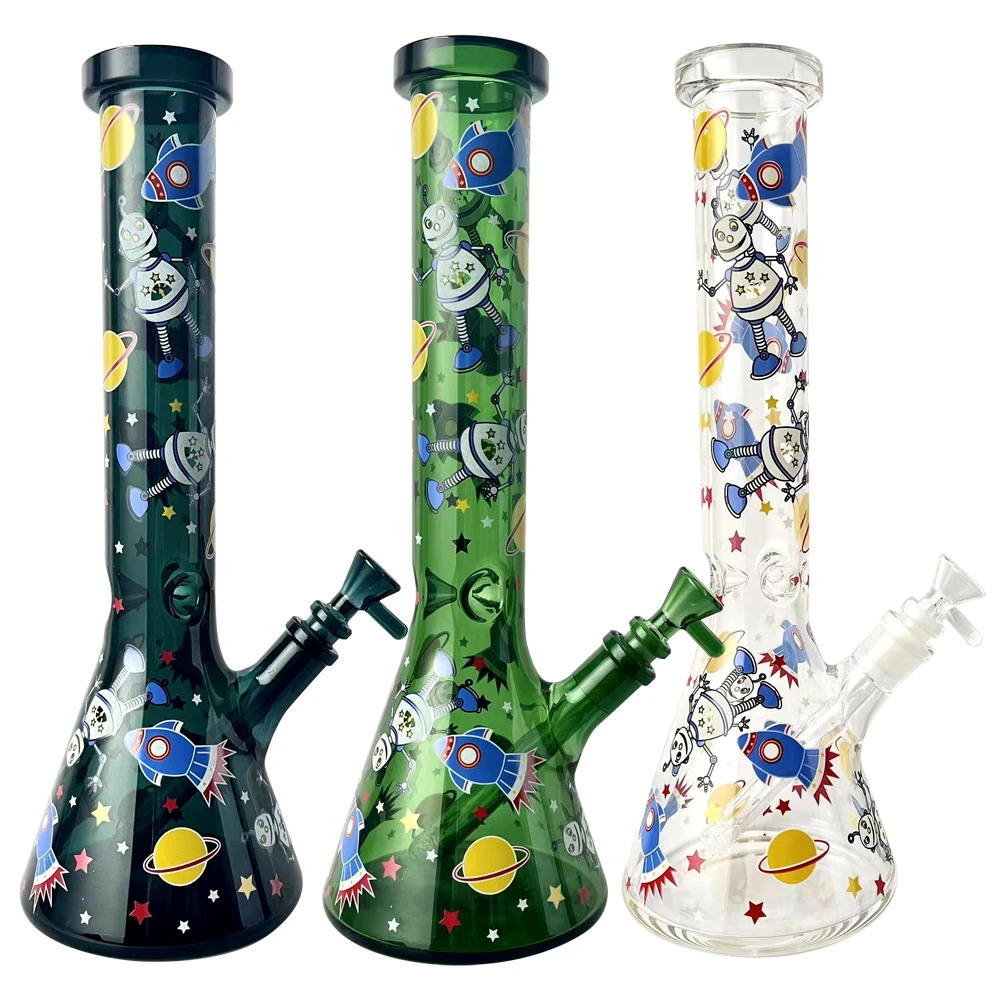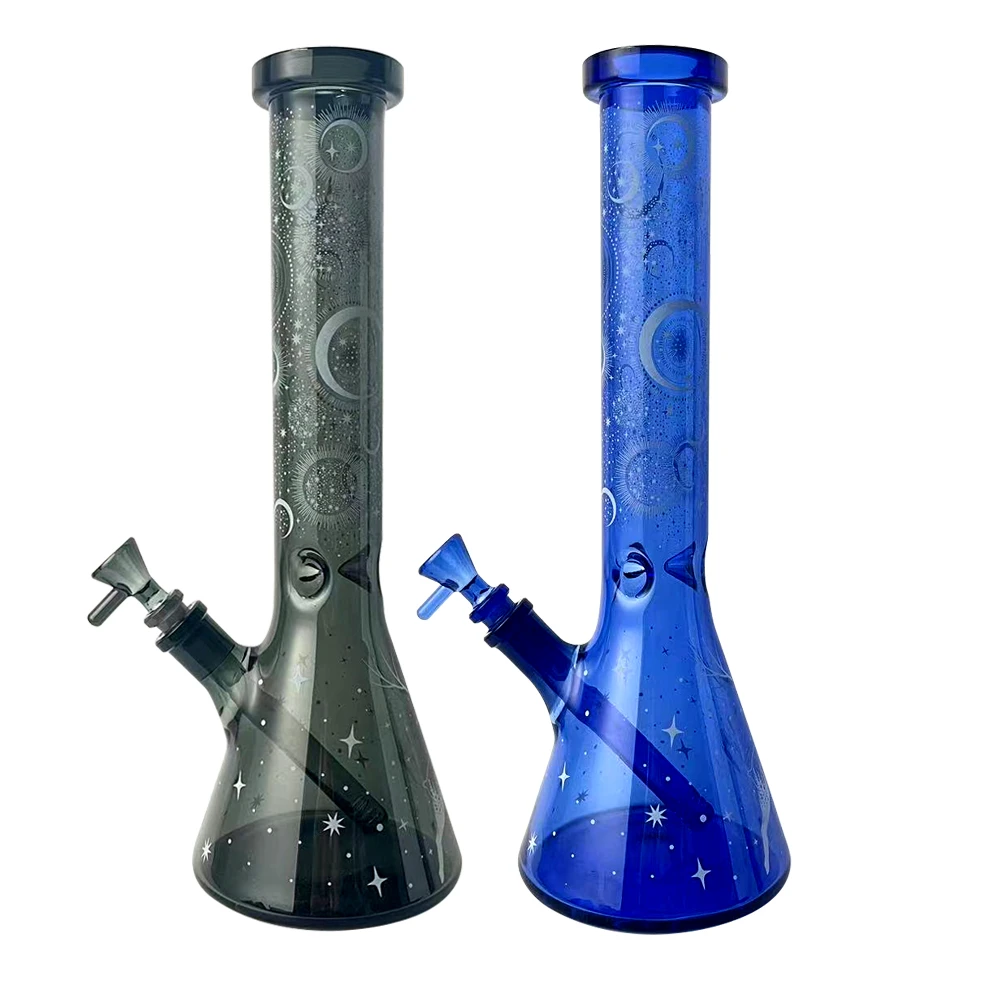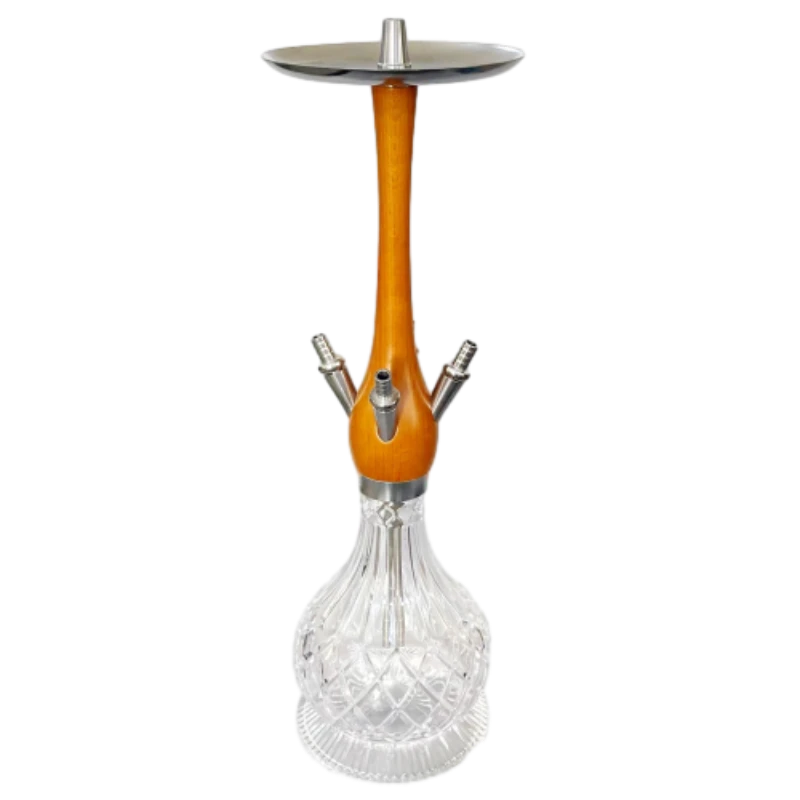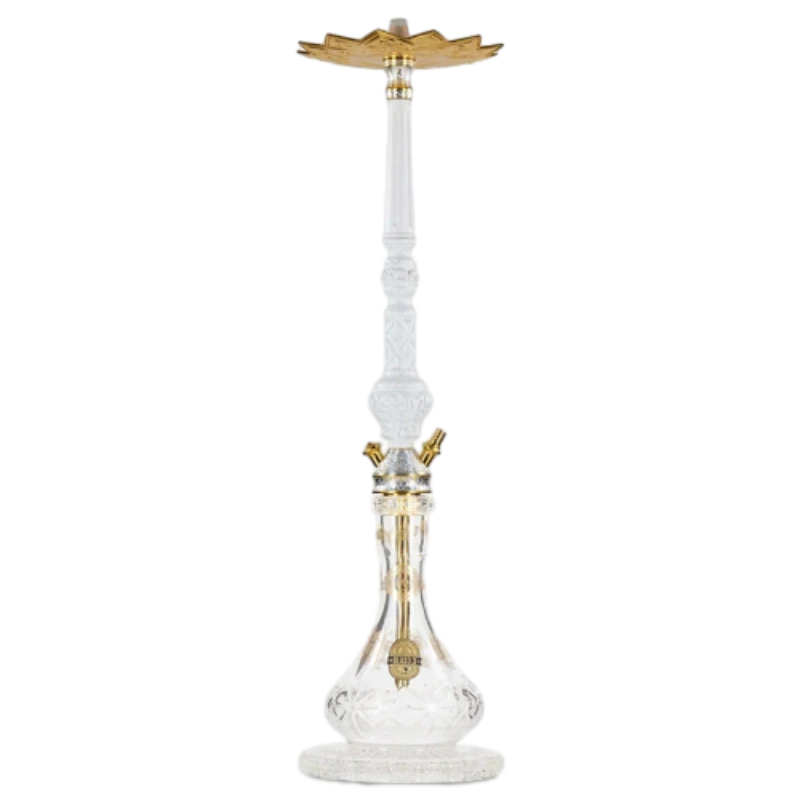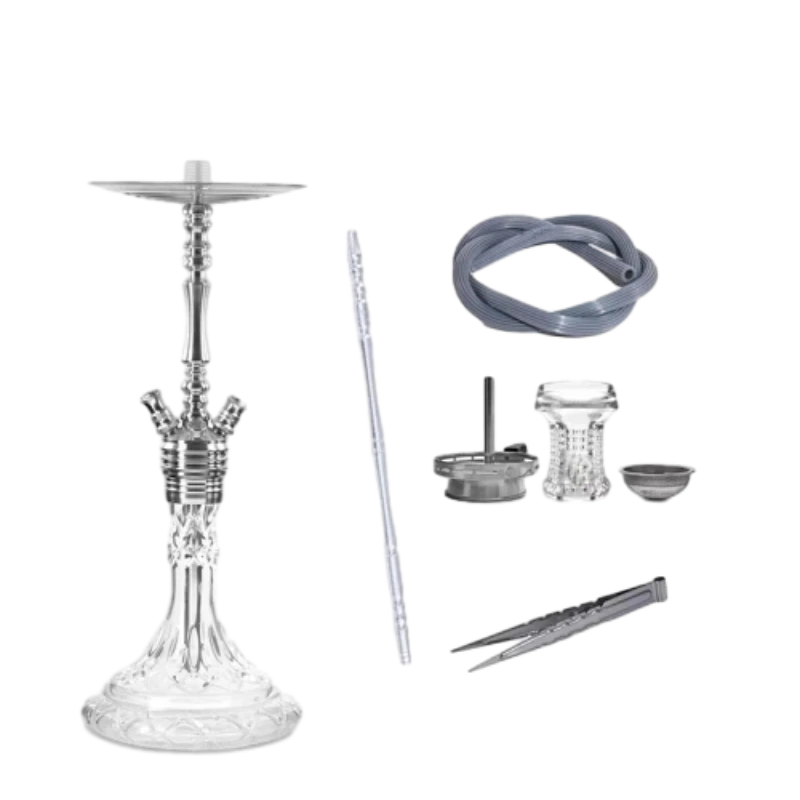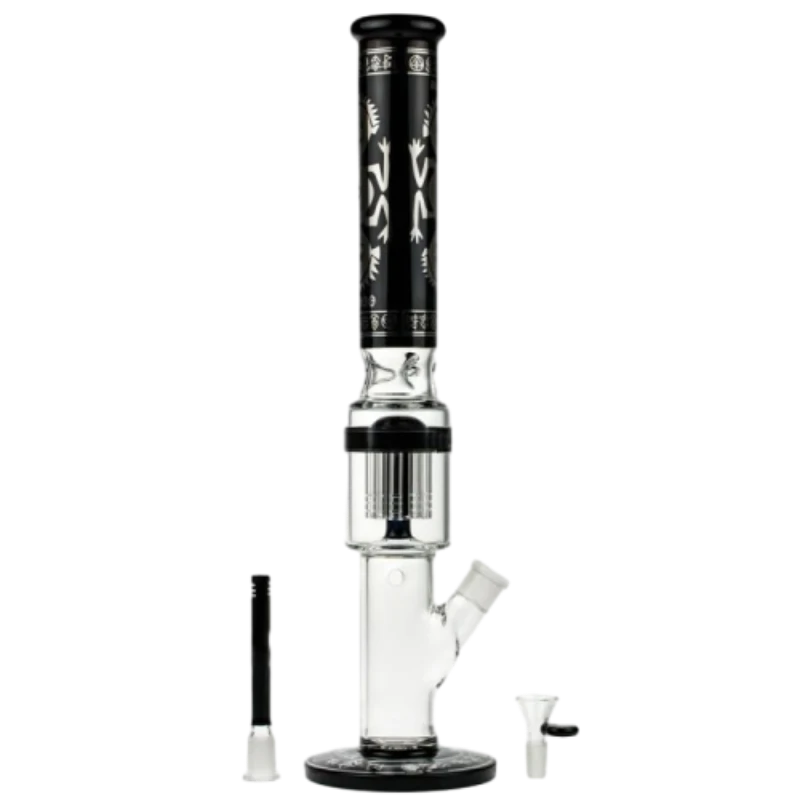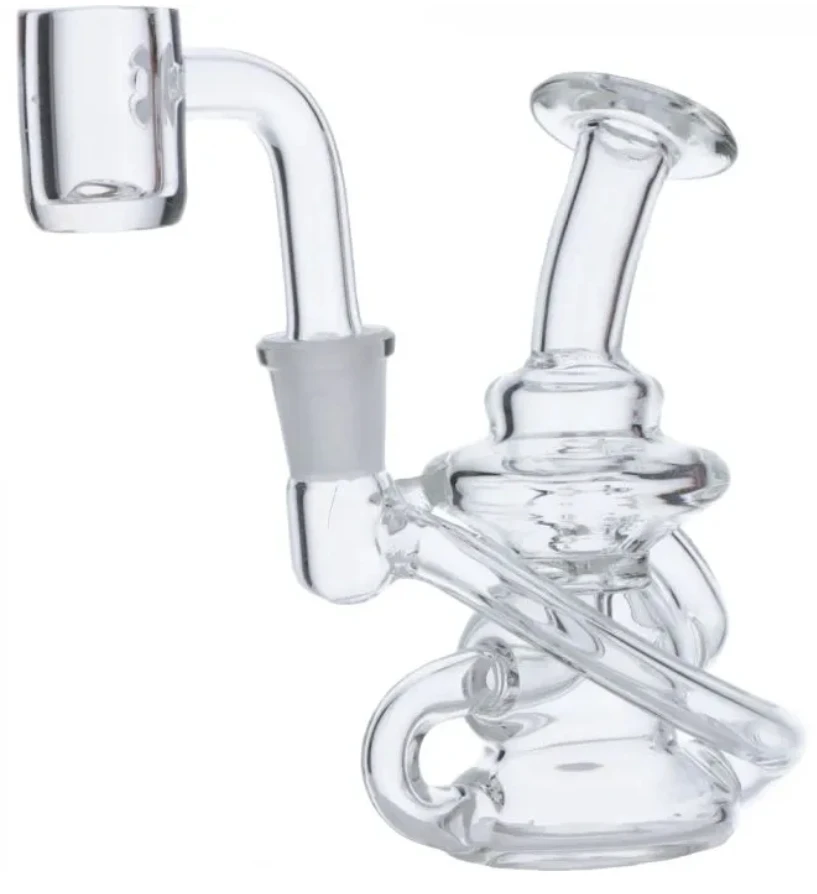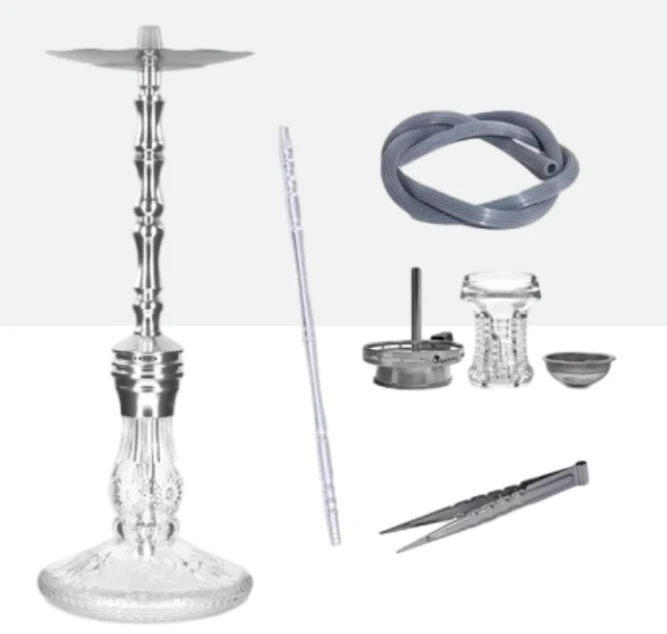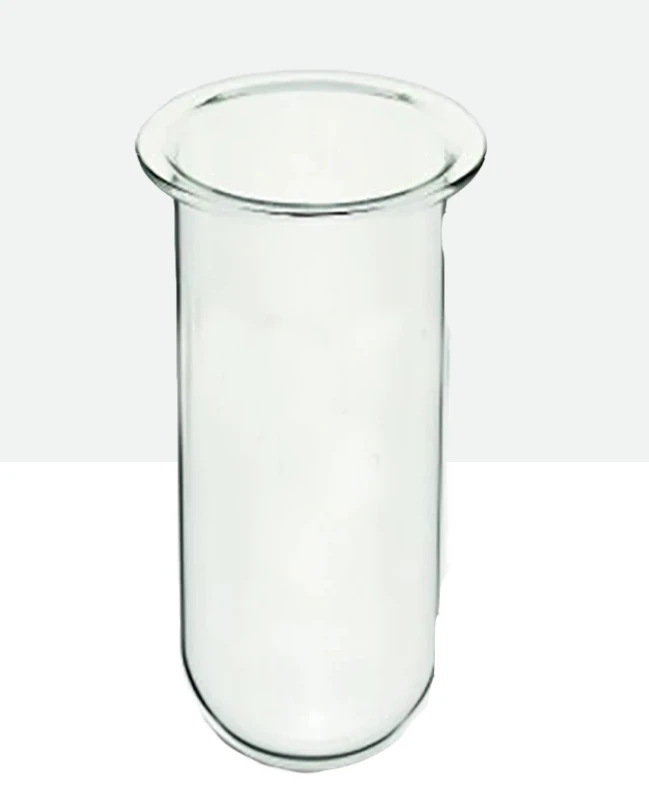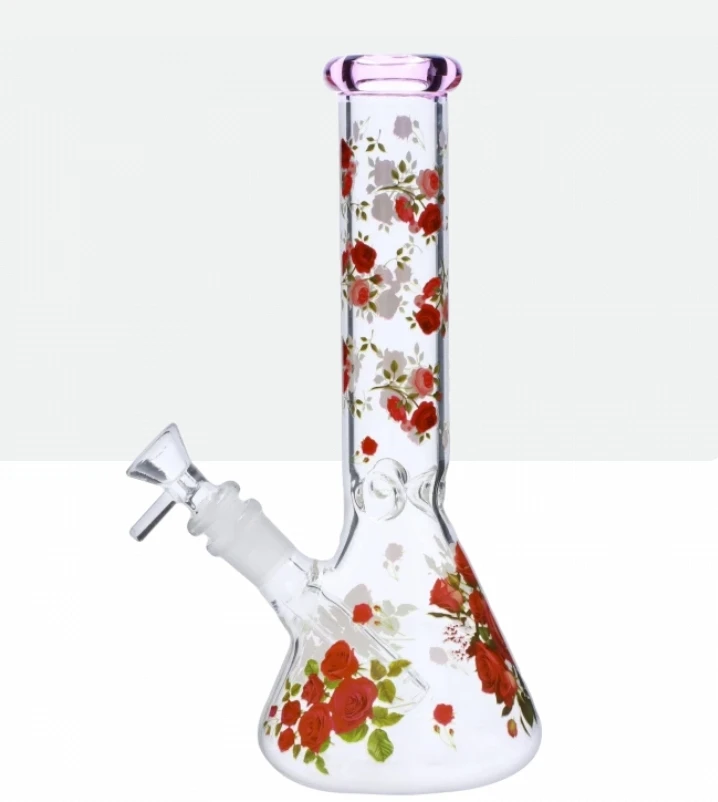Explore the intricate art and science behind crafting high-quality glass bongs, focusing on material excellence, precision engineering, and aesthetic innovation.
The Art and Science of Glass Blowing Bongs
In the rapidly evolving world of smoking accessories, the demand for high-quality, durable, and aesthetically pleasing glass bongs has never been higher. Far beyond simple utilitarian devices, modern bongs are intricate pieces of art, embodying both advanced material science and masterful craftsmanship. At the heart of this transformation lies the age-old yet continually refined process of glass blowing. Understanding how to blow glass bongs reveals a fascinating blend of heat, skill, and creative vision, transforming raw materials into functional masterpieces. This comprehensive guide delves into the entire ecosystem of glass bong manufacturing, from industry trends and technical specifications to the precise artisanal methods and the market's leading products.
Current Industry Trends in Glass Bong Manufacturing
The global smoking accessories market is experiencing significant growth, driven by changing consumer preferences and increasing legalization trends worldwide. Within this market, the glass bong segment stands out for its innovation and artistic expression.
- Rise of Heady Glass: There's a growing appreciation for "heady glass pipes," which are unique, artistic, and often one-of-a-kind pieces created by renowned glass artists. These pieces command premium prices and are collected as fine art. This trend emphasizes the artisanal aspect of how to blow glass bongs.
- Borosilicate Glass Dominance: Borosilicate glass, known for its superior durability, thermal shock resistance, and clarity, has become the industry standard. Consumers increasingly prioritize longevity and safety, leading manufacturers to exclusively use high-quality borosilicate.
- Percolator Innovation: Advanced percolation systems (e.g., matrix, honeycomb, tree, showerhead) are now standard, offering smoother hits and enhanced filtration. This requires sophisticated glass blowing techniques.
- Sustainable Practices: While challenging, some manufacturers are exploring ways to reduce energy consumption in their kilns and recycle glass waste, aligning with broader environmental consciousness.
- Online Retail Boom: The ease of access to a vast array of products online means consumers can easily buy bong from specialized retailers, including unique `heady glass pipes` and `decorative glass pipes`.
According to a report by Grand View Research, the global smoking accessories market size was valued at USD 14.07 billion in 2022 and is expected to expand at a compound annual growth rate (CAGR) of 6.6% from 2023 to 2030, with glass products being a significant contributor. This growth underscores the increasing demand for expertly crafted items, emphasizing the importance of mastering how to blow glass bongs.
Technical Parameters and Product Specifications
When considering a high-quality glass bong, several technical parameters are critical. These parameters directly influence the product's durability, functionality, and overall user experience. Understanding these aspects is key to appreciating the skill involved in how to blow glass bongs.
| Parameter | Description | Typical Range for Quality Bongs | Importance |
|---|---|---|---|
| Glass Material | Type of glass used. | High-quality Borosilicate Glass (e.g., Schott DURAN, Pyrex) | Durability, heat resistance, thermal shock resistance. |
| Wall Thickness | Thickness of the glass tubing. | 3mm to 9mm (typically 5mm or 7mm for durability) | Impact resistance, longevity. Thicker glass reduces breakage risk. |
| Joint Size | Standardized connection point for accessories (downstems, bowls). | 10mm, 14mm, 18mm (male or female) | Compatibility with accessories, secure fit. |
| Percolator Type | Internal glass structures designed to filter and cool smoke. | Tree, Honeycomb, Showerhead, Matrix, Sphere, Recycler, etc. | Smoke diffusion, cooling, filtration, smoother hits. |
| Annealing Temperature | Temperature to relieve internal stress after blowing. | Typically 560°C - 600°C for borosilicate glass | Crucial for structural integrity, preventing delayed breakage. |
| Working Temperature | Temperature at which glass is soft enough to be manipulated. | Typically 1600°C - 2000°C for borosilicate glass | Determines the level of control and intricacy achievable. |
| Base Diameter | Width of the base for stability. | Varies by design, usually proportional to height. | Prevents tipping, enhances overall stability. |
Featured Product: Alibear Sandblasted Seed of Life Torus Can Rig
The Alibear Sandblasted Seed of Life Torus Can Rig is an exemplary product that showcases advanced glass blowing techniques and aesthetic appeal. Crafted from premium borosilicate glass, it features a unique Torus Can design for optimal water filtration and a sandblasted Seed of Life pattern, adding an intricate, spiritual dimension to its appearance.
- Product Name: Alibear Sandblasted Seed of Life Torus Can Rig
- Product URL: https://www.dsglassbong.com/alibear-sandblasted-seed-of-life-torus-can-rig.html
- Material: High-grade Borosilicate Glass
- Design: Torus Can Rig with Seed of Life Sandblasted artwork
- Joint Type: Typically 10mm or 14mm Male, depending on specific model
- Percolation: Efficient internal design for smooth hits, characteristic of a high-quality rig.
- Aesthetics: The sandblasted finish provides a tactile and visually appealing texture, distinguishing it from clear glass bongs.

Applications and Usage Scenarios
High-quality glass bongs, including `glasses pipe` and `heady glass pipes`, serve various purposes beyond their primary function.
- Personal Enjoyment: The most common application, providing a filtered and often cooler smoke experience compared to other methods.
- Collection and Display: Many `heady glass pipes` and `decorative glass pipes` are purchased by collectors and displayed as art pieces due to their intricate designs, vibrant colors, and unique forms.
- Artistic Expression: Glass blowers continually push the boundaries of design and functionality, making each piece a testament to their skill in how to blow glass bongs.
- Gift Items: Unique and well-crafted bongs make excellent gifts for enthusiasts.
The versatility in design, from minimalist scientific pieces to elaborate artistic creations, ensures there is a glass bong for every preference, making the decision to buy bong a highly personal one.
Technical Advantages of Expertly Blown Glass Bongs
The meticulous process of how to blow glass bongs, particularly using borosilicate glass, yields several key advantages:
- Exceptional Durability: Borosilicate glass (e.g., similar to Pyrex) is highly resistant to thermal shock and breakage compared to softer glass types. This means it can withstand temperature fluctuations and minor impacts, leading to a longer lifespan.
- Heat Resistance: With a high melting point, borosilicate glass can safely handle the heat generated during use without degrading or releasing harmful chemicals.
- Purity of Flavor: Glass is non-porous and chemically inert, meaning it doesn't absorb flavors or odors. This ensures a clean, untainted experience every time.
- Ease of Cleaning: The smooth, non-porous surface of glass makes it incredibly easy to clean and maintain, preventing residue buildup and bacterial growth.
- Aesthetic Appeal & Customization: Glass blowing allows for unparalleled artistic freedom. Complex shapes, vibrant colors, and intricate internal structures (like percolators and recyclers) can be incorporated, creating truly unique `decorative glass pipes` and `heady glass pipes`. Sandblasting, fuming, and color-working techniques further enhance visual appeal.
- Safety: High-quality borosilicate glass is lead-free and non-toxic, ensuring a safe product for consumers. Manufacturers adhering to international standards (e.g., aspects of ASTM E438 for glass types) provide greater assurance.
The Meticulous Process: How to Blow Glass Bongs
The creation of a high-quality glass bong is a complex, multi-stage process that requires immense skill, precision, and an intimate understanding of glass properties. This detailed explanation covers the core steps involved in how to blow glass bongs, from raw material to finished product.
1. Material Selection & Preparation
The foundation of any superior glass bong is the material itself. For durability and heat resistance, high-grade borosilicate glass rods and tubing are selected. This glass, composed of boron trioxide and silica, boasts excellent thermal shock resistance, meaning it can withstand rapid temperature changes without cracking—a crucial property for items that experience significant heating and cooling cycles.
- Borosilicate Glass: Chosen for its low thermal expansion coefficient and high melting point.
- Tooling Setup: Essential tools include various types of torches (e.g., Minor, Barracuda), graphite paddles, reamers, pontil rods, shears, and an annealing kiln.
2. Initial Heating & Shaping (Gathering)
The glass tubing is carefully heated using a powerful torch. The flame's intensity and focus are critical. The glassblower continuously rotates the tube to ensure uniform heating, preventing stress points. As the glass softens, it becomes pliable enough to be "gathered" or thickened at specific points where strength or a certain shape is desired. This stage requires immense control to prevent over-heating or uneven distribution.
3. Blowing the Chamber
Once sufficiently heated and gathered, the glassblower uses a blowhose (attached to the glass or directly blowing into the tube) to introduce air, expanding the molten glass into a hollow bubble. This forms the main chamber or body of the bong. The artist must regulate the air pressure and continue rotating the glass to achieve a symmetrical and appropriately sized chamber. For complex designs like the Alibear Torus Can Rig, specific techniques are used to form the internal torus shape.
4. Forming Joints & Downstems
After the main chamber is formed, a separate section of glass tubing is heated and precisely attached to create the ground joint, where the downstem and bowl will connect. This connection must be perfectly sealed and dimensionally accurate (e.g., 14mm or 18mm) to ensure a snug, airtight fit with accessories. Similarly, the downstem itself is often created and integrated at this stage, sometimes as a fixed component or as a separate piece.
5. Percolator and Recycler Integration (for Advanced Designs)
For bongs with advanced filtration, such as the Alibear rig which implies efficient percolation, intricate internal structures (percolators, recyclers) are created and sealed inside the main chamber or connected to it. This is one of the most challenging aspects of how to blow glass bongs. Different percolator designs (e.g., tree, matrix, honeycomb, showerhead) require specific heating and tooling techniques to form their numerous small holes or arms, which are crucial for diffusion.
For recyclers, a series of interconnected tubes are created to circulate water and vapor, offering enhanced cooling and filtration. This requires exceptional precision in connecting multiple glass tubes while maintaining structural integrity.
6. Shaping the Mouthpiece & Base
The top of the main chamber is heated and shaped to form a comfortable and air-tight mouthpiece. Simultaneously, the base of the bong is crafted to ensure stability. This might involve flaring out the bottom or adding a separate reinforced disc of glass, as is common with many `glasses pipe` designs.
7. Decoration & Finishing (e.g., Sandblasting for Alibear)
Once the primary structure is complete, decorative elements are added. For the Alibear Sandblasted Seed of Life Torus Can Rig, this involves a specialized sandblasting process. The glass is masked in specific areas, and fine abrasive particles are propelled at high speed to etch the glass surface, creating the intricate Seed of Life pattern. Other decorative techniques include fuming (introducing metals like gold or silver into the flame for color change), color applications (using colored glass rods), and sculptural additions.
8. Annealing (Stress Relief)
This is a critical, often overlooked, step for the longevity of the glass piece. After all the heating and cooling during shaping, internal stresses build up within the glass structure. The bong is placed in a specialized annealing kiln (also known as a lehr), where it is slowly heated to a specific annealing temperature (typically 560°C for borosilicate) and then gradually cooled over several hours or even days. This controlled cooling allows the glass molecules to realign, relieving internal stresses and significantly increasing the bong's strength and resistance to thermal shock and breakage. Skipping or improperly performing annealing severely compromises the glass's durability.
9. Final Inspection & Quality Control
Once cooled, each bong undergoes rigorous inspection. This includes visual checks for flaws (cracks, bubbles, uneven glass, sharp edges), dimensional accuracy (joint sizes), and a leak test to ensure all seals are airtight. Reputable manufacturers adhere to strict internal quality control standards, ensuring every product meets high benchmarks for performance and safety. Products like the Alibear rig are carefully checked for the precision and depth of their sandblasted designs.
While industry-specific ISO or ANSI standards for bongs don't exist in the same way they do for industrial components, manufacturers often apply principles akin to ASTM standards for glass (e.g., for composition or thermal properties) to ensure material quality. A strong emphasis on quality control ensures a long usage lifespan, often many years with proper care.
Manufacturer Comparison and Choosing Your Glassware Partner
When looking to buy bong or work with a manufacturer, discerning quality is paramount. Here are key factors to consider:
- Expertise & Experience: Look for manufacturers with a proven track record in glass blowing, particularly those specializing in borosilicate and intricate designs. Experience in how to blow glass bongs for decades is a strong indicator of quality.
- Material Sourcing: Reputable companies use only high-grade, certified borosilicate glass, ensuring durability and safety. Inquire about their glass suppliers.
- Manufacturing Processes: Transparency in their how to blow glass bongs process, including annealing protocols and quality control checks, speaks volumes about their commitment to excellence.
- Customization Capabilities: A good manufacturer should offer flexible customization options, from unique designs and branding to specific joint sizes and percolator types.
- Certifications & Standards: While no specific bong-making ISO exists, a manufacturer's adherence to general quality management systems (like ISO 9001 for their overall operations, if applicable) or material certifications can be a strong indicator of trustworthiness.
- Customer Service & Warranty: Excellent pre- and post-sales support, clear warranty policies, and transparent communication are crucial for a reliable partnership.
Customization Solutions
For enthusiasts and businesses seeking unique `decorative glass pipes` or branded glassware, customization is a valuable option. Leading glass blowing manufacturers offer extensive customization solutions:
- Bespoke Designs: From concept to creation, artists can craft entirely new bong designs, including specific shapes, sizes, and internal percolation systems.
- Logo Integration: Companies can have their logos or specific branding etched, sandblasted, or fumed onto the glass.
- Color Customization: A wide spectrum of colored glass is available, allowing for personalized aesthetics.
- Feature Integration: Adding specific features like splash guards, ice pinches, or unique joint configurations.
The ability to tailor a glass piece exactly to one's specifications demonstrates the pinnacle of skill in how to blow glass bongs, transforming a functional item into a personalized statement.
Application Cases and Customer Feedback
Client Spotlight: "The Artisan Collector"
"I've been collecting `heady glass pipes` for over a decade, and the quality of craftsmanship is paramount to me. When I saw the Alibear Sandblasted Seed of Life Torus Can Rig, I was immediately drawn to its unique design and the promise of superior percolation. Having received it, I can confirm that the piece exceeded my expectations. The sandblasting is incredibly precise, the glass thickness is substantial, and the hits are exceptionally smooth. It's truly a functional art piece that stands out in my collection. This level of detail confirms their expertise in how to blow glass bongs." - Liam K., Glass Art Collector.
Online Retailer Partnership
"As an online retailer specializing in premium smoking accessories, sourcing reliable, high-quality products is critical for our reputation. Our partnership with DS Glass Bongs has been invaluable. Their consistent quality, transparent manufacturing process, and adherence to borosilicate standards ensure our customers receive products like the Alibear rig that are durable, safe, and beautifully made. Their expertise in how to blow glass bongs directly translates into satisfied customers and fewer returns." - Sarah L., Owner of 'Pristine Pipes Online'.
Ensuring Trustworthiness: Our Commitment
Trust is built on transparency, quality, and reliable support. At DS Glass Bong, we uphold the highest standards to ensure customer confidence in our products, including the Alibear Sandblasted Seed of Life Torus Can Rig.
- Rigorous Quality Control: Every product undergoes multi-stage inspection, from raw material verification to final annealing and leak testing. Our glass is sourced from reputable suppliers known for their premium borosilicate.
- Experienced Craftsmanship: Our glass blowers possess years of experience, mastering the intricate techniques of how to blow glass bongs, ensuring flawless execution of complex designs and robust construction.
- Warranty & Support: We stand behind the quality of our products. While glass is inherently fragile, we offer a clear policy on manufacturing defects and transit damage. Our customer support team is readily available to assist with any inquiries or issues.
- Delivery Timelines: For standard orders, products are typically shipped within 3-5 business days. Custom orders will have a detailed production and delivery schedule provided at the time of inquiry, often ranging from 2-4 weeks depending on complexity.
- Packaging: All products are meticulously packaged with high-density foam and robust outer boxes to ensure safe transit, minimizing the risk of damage.
Frequently Asked Questions (FAQ) about Glass Bongs & Glass Blowing
A1: Borosilicate glass is a type of glass that contains boron trioxide, which allows it to withstand extreme temperature changes and makes it more durable than traditional soda-lime glass. It's preferred for bongs because it's highly resistant to thermal shock (preventing cracks from hot/cold water), less prone to breakage, and chemically inert, ensuring purity of flavor.
A2: Annealing is a critical process where freshly blown glass is slowly and uniformly cooled in a specialized oven (kiln). This process relieves internal stresses that build up during rapid heating and cooling. Without proper annealing, the glass would be brittle and prone to cracking or shattering spontaneously. It vastly improves the glass's strength and longevity, directly impacting the quality of a bong crafted through how to blow glass bongs.
A3: Joint sizes are standardized and typically come in 10mm, 14mm, or 18mm. You need to match the joint size (male or female) of your accessories (downstems, bowls) to that of your bong. The Alibear Sandblasted Seed of Life Torus Can Rig usually features a 10mm or 14mm male joint. Measuring the inner diameter of the female joint or outer diameter of the male joint can help determine the size.
A4: While often used interchangeably, a "bong" is traditionally designed for dry herb, featuring a larger water chamber and typically a removable downstem. A "rig" (or dab rig) is specifically designed for concentrates (like wax or oil), usually smaller in size, and features a fixed downstem and a nail/banger instead of a bowl. The Alibear Sandblasted Seed of Life Torus Can Rig is designed as a rig for concentrates, emphasizing efficient diffusion for smoother vapor.
A5: For sandblasted finishes like on the Alibear rig, use isopropyl alcohol and coarse salt for the interior, shaking gently. For the exterior, avoid harsh abrasives. A soft brush or cloth with mild soap and warm water can clean the sandblasted areas. Rinse thoroughly. Always ensure all cleaning agents are completely removed before use.
A6: High-quality borosilicate glass bongs are considered safe. They are non-toxic, chemically inert, and do not leach harmful substances, even when heated. Ensure you purchase from reputable manufacturers who use lead-free glass and adhere to strict quality control to avoid inferior products that might contain impurities or have structural weaknesses from poor how to blow glass bongs techniques.
A7: "Heady glass" refers to high-end, artistic, and often one-of-a-kind glass pieces created by master glass artists. They are valued for their intricate designs, unique color combinations, advanced techniques (like fuming, sculpting, complex lampworking), and the artist's signature style. They often transcend mere functionality to become collectible works of art, demonstrating the pinnacle of skill in how to blow glass bongs.
References and Further Reading
For more in-depth information on glass properties and the art of glassblowing, we recommend exploring the following resources:
-
Glass Art Society (GAS) Journal: Provides scholarly articles and insights into contemporary glass art practices and innovations.
https://www.glassart.org/journal-archives/ -
Corning Museum of Glass - Glass Dictionary: A comprehensive resource for understanding glass terminology and history.
https://www.cmog.org/glass-dictionary -
American Scientific Glassblowers Society (ASGS): Offers technical papers and resources on scientific glassblowing, relevant for understanding material integrity and precision.
https://asgs.org/








